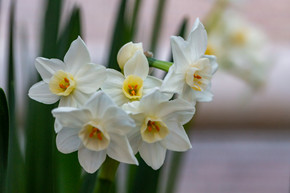

Blooms and Foliage:
Mulitplying:
Cyrtanthus mackenii is easy to propagate. It produces offsets (daughter bulbs) readily, which can be separated from the parent bulb when they're large enough—typically in early spring. Take care not to let the fleshy perennial roots dry out; replant the bulbs immediately and water them thoroughly.
You can also grow Cyrtanthus mackenii from seed. After blooming, if the flowers were pollinated, the plant may produce little seed pods. These pods will split open to release flat, papery seeds which are easy to collect. You can either scratch the seeds into the ground and wait to see if they produce new growth over the next 2-3 years, or you can sow seeds in early spring using a deep seed tray filled with the same soil mix recommended for mature bulbs. Lightly cover the thin, black, papery seeds with 3–4 mm of soil, and keep them moist using a gentle spray. Fresh seeds usually germinate within four weeks, and under ideal conditions, the seedlings may begin to flower by their third growing season.
Animals:
Blooms and Foliage:
Mulitplying:
Cyrtanthus mackenii is easy to propagate. It produces offsets (daughter bulbs) readily, which can be separated from the parent bulb when they're large enough—typically in early spring. Take care not to let the fleshy perennial roots dry out; replant the bulbs immediately and water them thoroughly.
You can also grow Cyrtanthus mackenii from seed. After blooming, if the flowers were pollinated, the plant may produce little seed pods. These pods will split open to release flat, papery seeds which are easy to collect. You can either scratch the seeds into the ground and wait to see if they produce new growth over the next 2-3 years, or you can sow seeds in early spring using a deep seed tray filled with the same soil mix recommended for mature bulbs. Lightly cover the thin, black, papery seeds with 3–4 mm of soil, and keep them moist using a gentle spray. Fresh seeds usually germinate within four weeks, and under ideal conditions, the seedlings may begin to flower by their third growing season.
Animals: